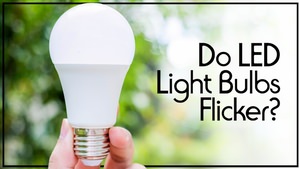Chances are, you’ve heard about blue light and its negative effects. But how does it work exactly?
The truth is, its harm on us is determined by the quantity of blue light we receive and when we’re exposed to it. Keep reading on as we dive into the details.

What Exactly is Blue Light?
Despite it being a relatively well known topic, few people are actually aware of what blue light is and how it works. So, here’s the rundown without getting too "sciency". ;)
Out of all the types of light that exist, us humans are only capable of viewing a fraction of them. For example, machines such as X-rays and microwaves utilize light outside of this range. What we are able to see is known as the Visible light spectrum, and it’s expressed by the colors of our rainbow.
Each color of light gives off a distinct wavelength and with it, a different amount of energy. And this is why blue light has the effect that it does. Because of its higher amount of energy, blue light has a much easier time hitting our retinas compared to the other colors.
If you’ve read this far in, I’m convinced you got nothing but A’s in all your science classes.
Where Do You Find Blue Light?
Although blue light is associated almost exclusively with phone and tablet screens, they’re not our only sources. Both LED light bulbs and fluorescent lights emit levels of blue light. But funny enough, none of what I just listed comes even close to being the biggest culprit.
The Sun
Yes, Believe it or not, our favorite big ball of gas is almost constantly giving off blue light. And this actually makes a tremendous amount of sense if you take a minute to think about it.
When we’re exposed to blue light, it prevents our brains from releasing melatonin. This is the hormone that makes us feel tired, and it’s responsible for managing our circadian rhythms. So, given that we as humans are naturally diurnal, it’s completely understandable as to why seeing the sun would kick-start our brains into waking up.
That being said, you’d be exposing yourself to much more blue light by going on a walk than you would playing Plants Vs. Zombies in your basement.
"That’s right, mom. I’m just choosing the healthier option."

Negative Effects of Blue Light
While blue light tends to get a bad wrap, it’d be impossible not to mention the harmful ways in which it can impact our bodies.
Sleep
As previously mentioned, blue light is extremely effective at reducing melatonin. This can be beneficial for when you’re waking up in the morning. In fact, it’s ideal. But exposing yourself to blue light during the evening hours can prevent you from winding down and receiving a good night’s rest. So, it’s best to stay off the phone a few hours before bed.
We also briefly touched on this topic in our other blog - Is it Bad to Sleep with Lights on at Night?
Effects on the Eyes
Due to blue light’s higher quantity of energy, our eyes have a more difficult time handling it. This is why prolonged exposure to our device screens can result in a plethora of minor, yet painful consequences. A few of these include, but aren’t limited to:
- Difficulty with eyes focusing
- Migraines
- Dryness of the eyes
- Eye strain
Ways to Cut Back on Blue Light
Now, don’t worry. You don’t need to click off this blog, or chuck your computer in a dumpster Ron Swanson-style. The fact of the matter is, all of what’s listed above can be easily avoided with some habits and precautions.
Minimizing Exposure
One of the simplest solutions to blue light’s negative effects is to reduce and or divide up your screen time. This may seem almost impossible, especially with technology’s prevalent usage in both schools and jobs nowadays. But even a few 20-second breaks per hour can go a long way to prevent migraines and eye strain.
Filters and Glasses
Many phones, tablets, and monitors are equipped with a night shift mode. Although it's much more tolerable for your eyes (especially during the evening hours), these filters don't completely strip the device of its blue light. Instead, they simply mask your screen with an orange-colored tint.
If you have a particularly difficult time staying away from screens, you might be in the market for some blue light blocking glasses. Unlike a tinted screen, these pieces of eyewear actually absorb the blue light wavelengths before they can reach your retinas.
Conclusion
Overall, blue light is practically unavoidable in our daily lives, now more than ever. So as long as we consume it in moderation and at the appropriate time, both we and our eyes won’t get too bent out of shape. :)






